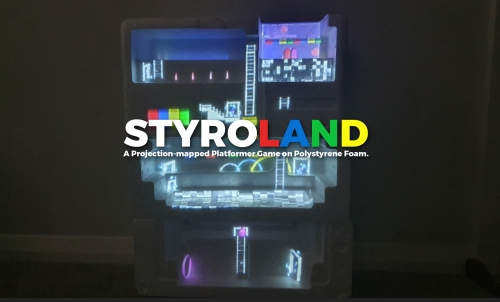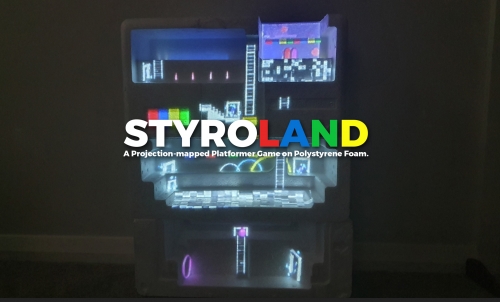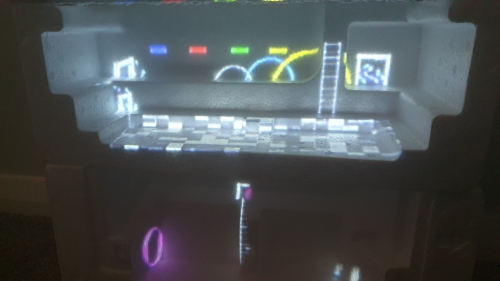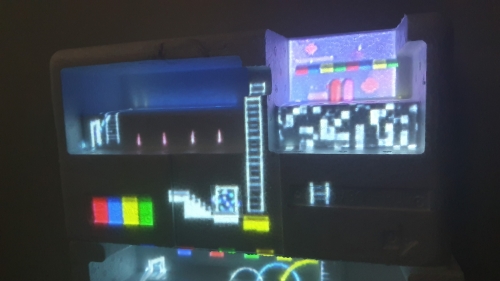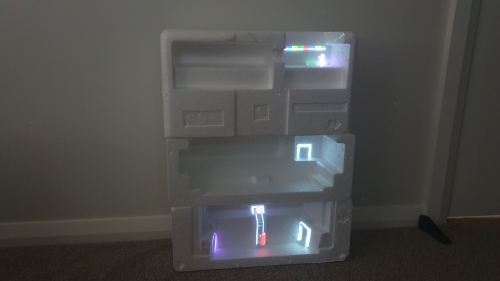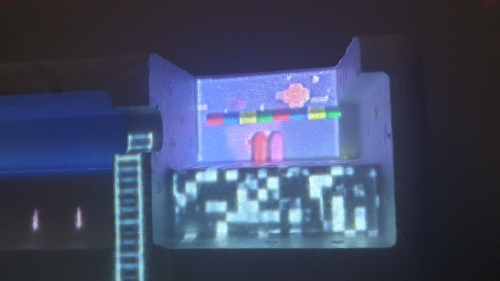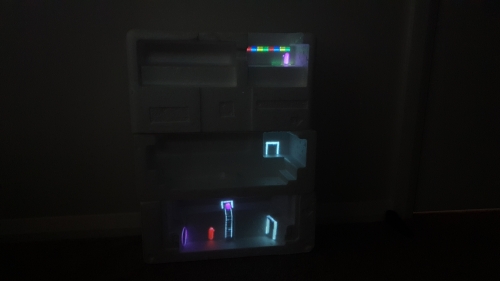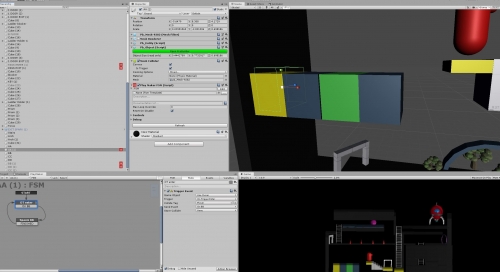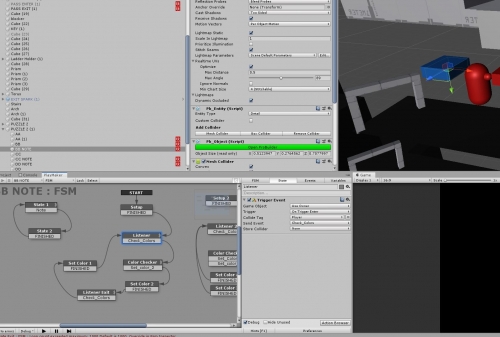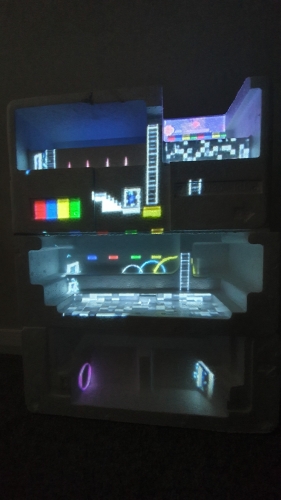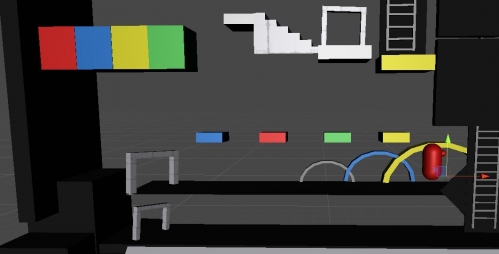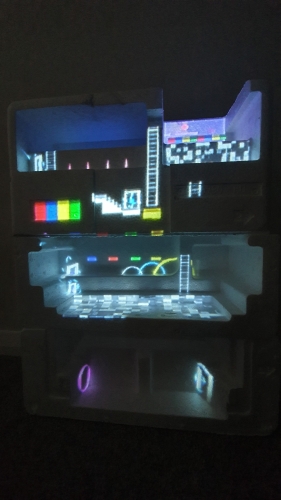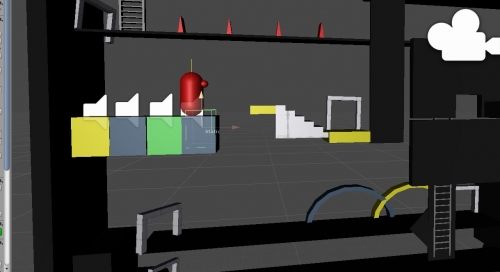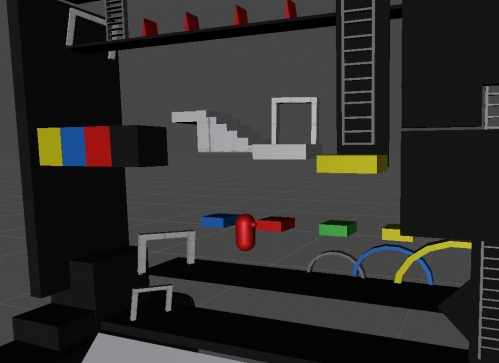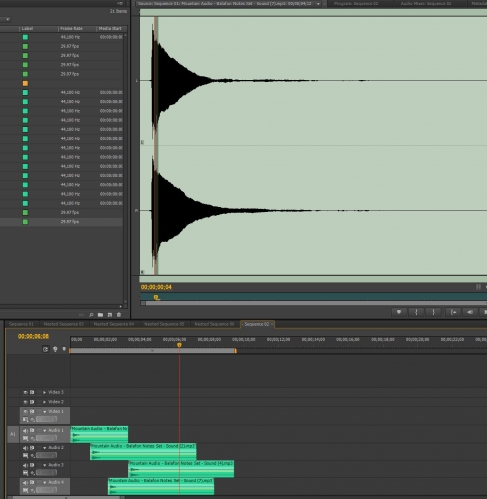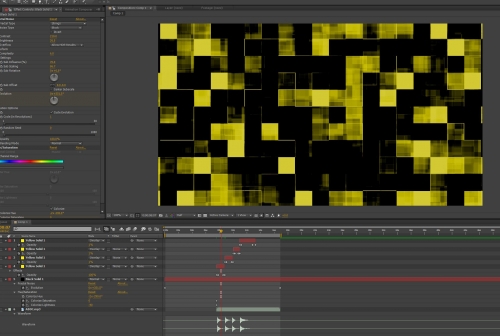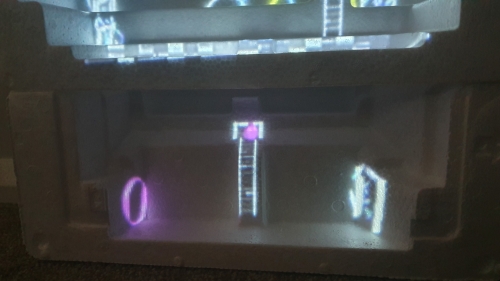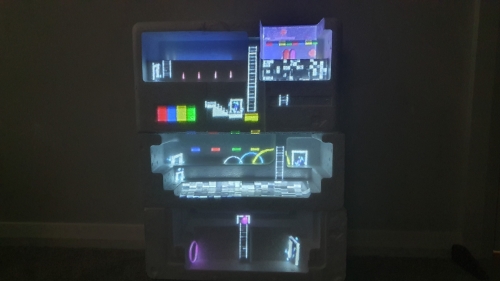Styroland is a projection-mapped platformer game, designed with the limitations and constraints of found physical objects.
Projeciton-mapped on a configuration of polystyrene blocks, the game is played by a single player using a wireless DS4 gamepad. The objective of Styroland is to reach the top-most level by solving environmental puzzles that unlock pathways for players to explore and move up. There is no fail state are enemies in Styroland, it is a calmly paced game about spatial exploration, observation, puzzle-solving, discovery, and the intersection of digital and physical objects level design. Styroland concludes with the player reaching the purple character, and enabling control of both characters in a lighted space that encourages jumping or “dancing” while hitting familiar music notes. I opted for this as the player’s final pay-off for completing Styroland, as the escape on a spaceship and escape idea may not be executed properly in a location where Styroland isn’t propped behind a wall.
Styroland can be playtested in the end-of-year MAGI expo 2019.
My Inquiry and the Project
How can found objects inform level design through projection-mapping? Styroland is a platformer game that aims to investigate towards this inquiry. The game is projection-mapped on found physical objects, specifically polystyrene foam or what I always called, Styrofoam. The project aims to explore the potential of interactive projection-mapping, mixed reality and how found and/or existing objects may inform level design. Physical objects as guidelines and lending constraints to a game’s level design and mechanics is what this project aspires for as distinction from other interactive projection-mapped installation works of similar nature.
Projection-mapped on a configured stack of polystyrene foam blocks, Styroland focuses on player movement, traversal, exploration and environmental interaction. The objective of the game is to allow the player to self-explore and discover the game’s mechanics and interactions without explicit directions or dialogue, but with the universal cues of colors and/or sound.
I consider Styroland to be one of my initial steps towards a long journey as an interactive projection-mapping practitioner. Through iterative and reflective practice and completing Styroland, I believe I have a working proof-of-concept and a development process that addresses my inquiry: How can found objects inform level design through projection-mapping? It came with a multitude of challenges mainly from my technical limitations using Unity, the installation/exhibition considerations and logistics, and an initially ambitious scope. As a minor-project for MAGI Semester 2, I’m quite happy and content on how my project has resolved and look forward to exhibiting it in a public space.
Documentation
This playthrough documentation of Styroland aims to show all of Styroland’s levels from start to finish. The video only uses ambient room sounds, the humming of the projector and Styroland’s gameplay sounds. Styroland in the video doesn’t portray its actual placement on an exhibition space. The work is intended to be mounted on an exhibition wall or stand, with a projector mounted on the ceiling and angled towards its front, letting viewers stand while playing it. However, play testing Styroland while on the floor was also a valid and fun and engaging way of experiencing the piece.
Folio 1 WIP: http://magistudio.net/work/agi-02-interactive-projection-mapped-platformer-where-i-m-at
Folio 1 Prototype: http://magistudio.net/work/agi-2-styroland-a-projection-mapped-platformer-game-prototype
Folio 2 WIP: http://magistudio.net/work/agi-02-styroland-wip-an-interactive-projection-mapped-platformer
Folio 2 Presentation: https://docdro.id/Tr5u52u
About This Work
By Carlo Tolentino
Email Carlo Tolentino
Published On: 17/10/2019
